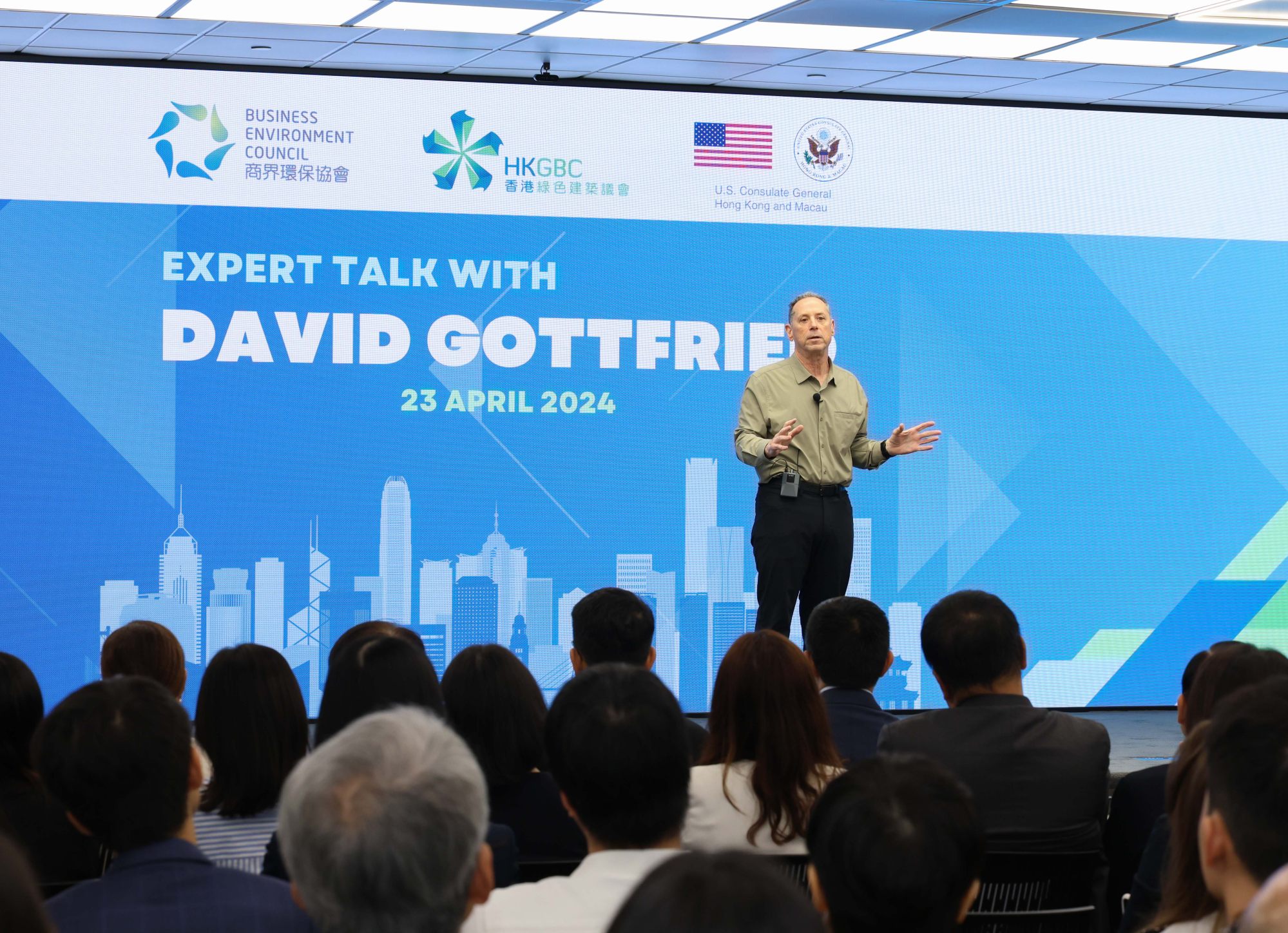
Green buildings: Hong Kong needs ‘revolution’ in materials, cull of old ‘carbon-hog’ structures, says David Gottfried
- Industry needs to accelerate adoption of construction materials with lower ‘embodied’ carbon, says World Green Building Council founder
- City should use ‘carrots and sticks’, including a carbon tax, to encourage retrofitting or replacement of old buildings, Gottfried says
Hong Kong needs to implement a carbon tax for building owners and use more environmentally friendly construction materials to reduce the carbon footprint of the city’s concrete jungle, according to the father of the global green building movement.
Reducing embodied carbon – the greenhouse-gas emissions associated with the manufacturing, transportation and installation of materials – will be the next wave of the green building movement, David Gottfried, the founder of both the World Green Building Council and the US Green Building Council, said in an interview.
Hong Kong’s top-tier developers are “as good as I’ve seen anywhere in the world” in their understanding and adoption of green building concepts, Gottfried said. Yet they can do more to increase their use of materials with lower embodied carbon.
Meanwhile, a greater problem is the city’s population of old, inefficient buildings. “They’re carbon hogs,” he said. “I call them clunker buildings. Over 30 years the amount of carbon they’re consuming is equivalent to the skyscraper building three times their size. We have to deal with them now, that’s where the carbon is in Hong Kong.”

Embodied carbon is responsible for around 11 per cent of emissions globally and 28 per cent of the global building sector’s emissions, Gottfried said. It is expected to account for around 72 per cent of the emissions associated with new construction around the world from now until 2030.
In Hong Kong, embodied carbon accounts for around 80 to 90 per cent of the overall carbon footprint of buildings, as the emissions from operations are relatively low thanks to the city’s high-rise and dense environment, said Gottfried.
“I am impressed with Hong Kong and its top-tier developers, in how much they know about green buildings and embodied carbon, and the rating tools, all the measures they are doing, the sophistication, the drive,” he said. “It’s impressive.”
Yet the city’s older buildings are a drag on progress towards lower overall emissions.
To get there, Hong Kong must retrofit older buildings “or take them out and deconstruct them sooner and faster”, Gottfried said.

“Use their existing carbon … the glass, the concrete, the steel, the wood, and reuse. That’s what you need to do. You need a gentrification map in Hong Kong, and a road map on those buildings.”
A combination of carrots and sticks could be used to get the attention of the owners of these older buildings, he said.
“Regulate them and have a carbon tax for building owners per square metre,” he said. “If they weigh in over it, they are taxed. You create urgency and immediacy through penalty. Or you give them an investment tax credit to [reduce their] embodied carbon, through lowering their real estate taxes or lowering their energy price. Something to get their attention.”
As adept as Hong Kong builders are in using green techniques, they still need to accelerate their adoption of construction materials with lower embodied carbon, Gottfried said at a talk organised by the Hong Kong Green Building Council and Business Environment Council on April 22.
“This is what is needed in the industry,” he said. “We need your government, your transportation department, your future airports, your sand and gravel and land reclamation projects to advance purchase [better material], if it meets the specifications.”
Hong Kong urged to step up public-private efforts to make its buildings green
The industry needs a “revolution in financing and procurement” to drive the use of low-embodied-carbon materials, he said, adding that continuing to use high-emitting materials will force the industry to resort to carbon offsets later to reach decarbonisation goals.
Embodied carbon has always been an elephant in the room, said Mark Lam, head of investor relations and corporate sustainability at Hongkong Land.
“At the moment I think embodied carbon forms a part, but a relatively small part, in any green building certification scheme,” Lam said during a panel discussion on sustainable buildings on April 12.
Looking at the data, the upfront carbon generated before a building is used is around 40 to 50 per cent of its life cycle carbon, or the carbon generated over the building’s entire life, Lam said.
“Globally we’re making a lot of headway around scope 1 and 2 [emissions],” he said. “So how do we in the future migrate towards a more significant portion of the scoring for green buildings being dependent on embodied carbon performance? I think that’s quite key.”

